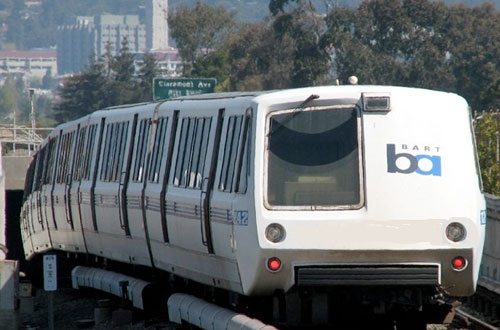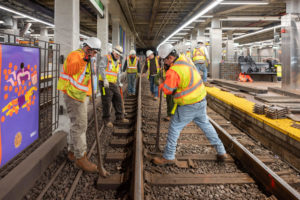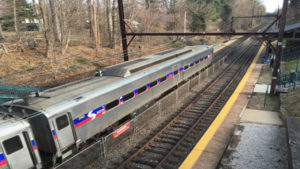BART budget looks toward future
Written by Maggie Lancaster, assistant editor
In effort to control expenses in the face of a three-percent decline in ridership, the Bay Area Rapid Transit (BART) Board of Directors approved a $1.92 billion budget for Fiscal Year 2018.
The budget will allow BART to integrate new rail cars into service before the end of the calendar year, as well as gear up for the opening of two extension projects and the full implementation of a major system reinvestment program all while closing an estimated deficit of $31 million.
The new budget dedicates $671 million to system reinvestment including $171 million from Measure RR, which voters in Alameda, Contra Costa and San Francisco counties approved in November. Among the highlights:
- $285 million towards the acquisition of 775 new rail cars for the Fleet of the Future.
- $97 million to continue traction power infrastructure replacement to provide riders with more reliable service.
- $71 million towards the Hayward Maintenance Complex, a new modern facility to maintain the Fleet of the Future.
- $67 million for station modernization. This includes a major program to replace escalators and install canopies for station entrances along Market Street in San Francisco. Funding will also go towards station upgrades at Powell, 19th Street, El Cerrito del Norte, Downtown Berkeley and Concord Stations.
- Two-thirds of the Capital Budget is directed towards system reinvestment.
- $100 million for the Earthquake Safety Program of which $74 million is for Transbay Tube seismic retrofit.
The budget includes $75 million dollars to improve access to BART stations and to add flexibility to the rail system. Some of the priorities include:
- Addition of four station cleaners to improve cleanliness at the Civic Center and Powell Street stations.
- Major investments in bus intermodals at Union City, Balboa Park, and Concord Stations.
- Installing more user-friendly wayfinding signs.
- The design of automatic train turnback capabilities at 24th Street Station and extension of tail tracks at Dublin/Pleasanton and Millbrae to make the system more resilient and flexible.
BART is devoting $2.7 million to a strategy of enforcement, station hardening and education to limit fare evasion and assure our riders that we value their patronage. That strategy includes:
- Hiring six Community Service Officers and one Police Administrative Specialist.
- Raising barriers and service gates to a uniform height of 60 inches.
- Eliminating all non-fare gates other than one immediately next to each station agent booth, while ensuring fare gates open to provide emergency egress capacity.
Although BART has experienced a 27-percent increase in ridership since 2009, weekday ridership during FY17 was nearly five percent below initial projections with an average of 423,500 (year-to-date) on weekdays. Weekend ridership was down more than seven percent. BART is expecting a modest increase in ridership for FY18 to an average of 431,709 on weekdays. That is mainly attributed to the expected opening in FY18 of the Silicon Valley Berryessa extension to north San Jose and the eBART extension to Antioch.
The transit agency says it saw financial warning signs early on and responded by instituting a selective hiring freeze. BART also reduced overtime and mandated a ten percent reduction in professional and technical service expenses. The new budget builds on those initial steps by eliminating 15 positions without resorting to layoffs.





